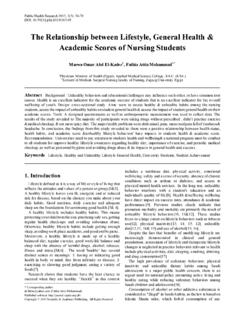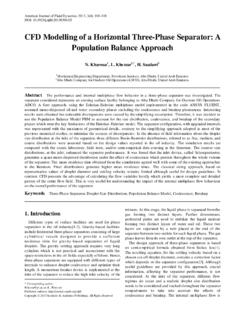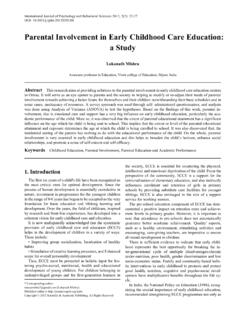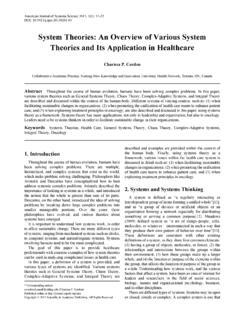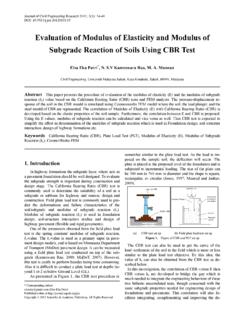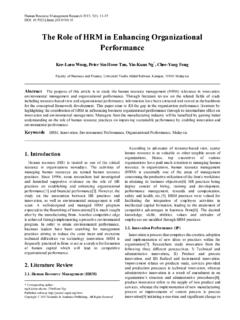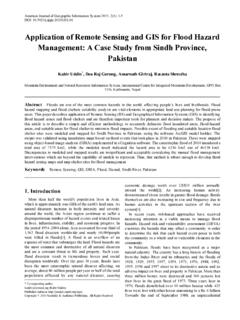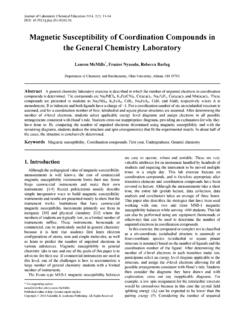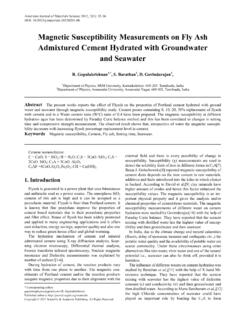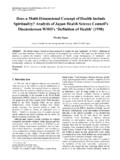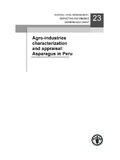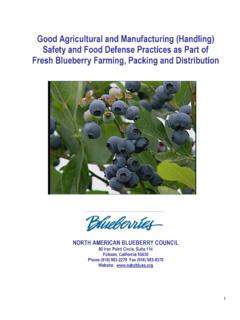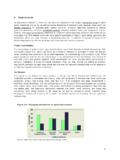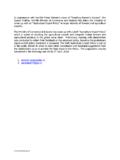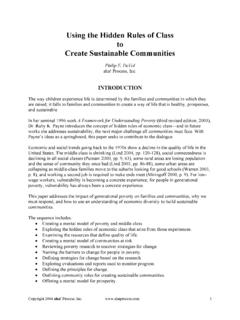Transcription of Physicochemical and Sensory Properties of …
1 International Journal of Food Science and Nutrition Engineering 2013, 3(1): 7-11. DOI: Physicochemical and Sensory Properties of traditionally and Laboratory Made Ghee (Samin) of the Sudan Abdel Moneim E. Sulieman1,* , Mashear B. Mohammed2, Ali O. Ali2. 1. Department of Biology, Faculty of Science, University of Hail, Kingdom of Saudi Arabia 2. Department of Food Science and Technology, Faculty of Engineering and Technology, University of Gezira , Wad M edani, Sudan Abstract Samin is traditional cooking o il produced using the butter made fro m the milk of sheep , cow or objectives of the study was the determination of the physical, chemical and Sensory characteristics of samin samp les collected fro m local market, preparation of Samin at the laboratory level and evaluation its quality. The mo isture content, acid value (mgKOH/g) , free fatty acids and peroxide value ranged - + , , - (mgKOH/g), , , - (mEq/kg) in the various samin samp les.
2 However, the saponification value, density, viscosity, melt ing point and refract ive index of the different samin samples ranged (mgKOH/g), g/cm , 10 10 3 , 38-37 and , respectively. The Sensory evaluation revealed there was no-significant difference in texture, color, and overall acceptability of the samples, but there was significant difference (p ) in flavour, between LM S sample and the other samples. It is highly reco mmended to imp rove production of samin under controlled hygienic conditions. Keywords Quality, Pero xide Value, Viscosity, Density, Refractive Index, Flavor The people in Sudan use milk to make Samin but some of 1. Introduction them use butter to make it. The production of Samin is found in many parts of Sudan and they use many ways of making it, The health benefits of milk can be ach ieved fro m milk some people put the fermented milk in a container and jerk it directly or its products such as cheese, butter, curd, clarified hard for a long time until they find Samin in the face of the butter or ghee, dairy whitener, ice cream, cottage cheese or container.
3 Others put the milk on the fire and after that put it paneer, flavored milk, milk sweets etc. The US Depart ment in a cool place, and they take the thick part fro m the top of of Agriculture (USDA) has clearly mentioned in its Dietary the milk for so me days after some days boiling it to obtain Gu idelines to include milk and milk products in the diet[1]. Samin. Samin is a nutritious food product that holds great Milk fat is the major source of energy, since preh istoric cultural significance, particularly as an indicator of familial times, man has satisfied his need for fat by eating foods from wealth in Sudan. The major use of Samin among those who a variety of animal and vegetable sources. Among these produce it, namely the no mads, is as a topping for mulah , foods milk fro m animals has been a prime source of nutrients. however many of these people simp ly drin k Samin as it is, in traditionally milk fat has always had the highest economic small quantities such as a coffee cupful every morn ing.
4 Value of any of the milk constituents, placing it at an Samin is also given to children either pure or mixed with economic d isadvantage to other edible fats and oils some food, somet imes pure Samin is used as a relish or products[2]. sauce in the Northern and Nile Provinces, also the practice of Samin is a traditional cooking oil most common in North topping coffee and tea with floating Samin is well known in African and M iddle Eastern countries. It is produced using the Sudan. Samin is even given to highly valued pet animals, the butter made fro m the milk of sheep, cow or goats. Also such as horses. The objectives of the study include the called Ghee in Indian cuisine. Ghee is clarified butter that determination of the physical, chemical and Sensory has been cooked longer to remove all the moisture, and the characteristics of Samin samples collected fro m local market milk solids are browned (caramelized) in the fat and then and to produce, preparation of samin at the laboratory level strained out.
5 This gives a rich nutty taste. Ghee has a longer and evaluation of its quality. shelf life, both refrigerated and at room temperature[3]. * Corresponding author: (Abdel Moneim E. Sulieman) 2. Materials and Methods Published online at Copyright 2013 Scientific & Academic Publishing. All Rights Reserved Materials 8 Abdel M oneim E. Sulieman et al.: Physicochemical and Sensory Properties of traditionally and Laboratory M ade Ghee (Samin) of the Sudan Thirty Samin samples were obtained from local markets in Flow of carrier gas (heliu m) 1-2/sec Medani, Elobied and Rofaa cities in Sudan (10 sample fro m Identificat ion of chromatographic peaks was carried out each) during the period January February 2011, and by comparison of their retention times using appropriate another sample was prepared at laboratory level. All of these standards of fatty acid methyl esters. samples were transferred to laboratories of the Depart ment of Food Science and Technology, Faculty o f Engineering Sensory Analysis and Technology, University of Gezira fo r analysis.
6 Samin samples were subjected to Sensory evaluation (Hedonic scale) using 15 panelists. The panelists were asked Preparati on of samin at Laboratory Level to assess each sample for texture, flavor, co lor and overall For preparation of samin at laboratory level, a Robe acceptability using a questionnaire designed by the inoculum (starter culture) was added to fresh cow milk and Depart ment of Food Science and Technology. All analysis the fermentation process was allowed to proceed for took place in a roo m free fro m distributing noises, with overnight to produce fermented milk (Robe). Then the butter uniform intensity levels of lighting; fresh air was provided was separated by centrifugation. The co llected butter was with water for rinsing. All those conditions were equally then boiled to remove excess water to obtain the laboratory used for all tests. The order of presentation of samples was made sa min (LMS).
7 Randomized and the samples were given codes before being tested, the results were recorded and analyzed. Physicochemical Properties of Samin Hedonic Test The mo isture content of various samples was determined according to the AACC methods[4]. Ten judges were selected to express their preference of The free fatty acids of the samples were determined Samin sample. The samples were presented so that each according to the AOAC methods[5]. Five grams of Samin sample had equal chance to be tasted first or second. The weighed into conical flask added 25 ml diethyl ether, 25 ml results obtained by the panelists were converted to MSTAT. alcohol (ethanol) and 1 ml of phenolphthalein solution (1 [9]. The scores were subjected to statistical analysis. percent) and carefully neutralize with M sodium hydroxide shaking constantly until a pin k colour is obtained. Statistical Analysis The acid value was calcu lated fro m the following equation: The scores obtained by the panelists in hedonic test were subjected to analysis of variance at 5% level accord ing to MSTAT[9], to determine whether there were significant different means for each variable; (F-test) was used.
8 The Pero xide value and saponificat ion number of the different samples were determined according to AOAC[6] 3. Results and Discussion methods, while the density, viscosity were determined according to Dardiri[7]. On the other hand, the melt ing point Physicochemical Properties of Samin Samples was determined according to AOCS[8] method. The The Physicochemical Properties of samin samp les is Refractive index of the samples was determined by presented in Table (1). The mo isture contents of Medani, Rofaa, Elobied and laboratory made sa min (LM S) samples were + , + , and Fatty Aci d Composition , respectively. These values are within the Fatty acid composition of the different samin samples was recommended Codex Standards for ghee ( ), however, analyzed by gas liquid chromatography (GLC) using Bille and Ng wira[10] also found that the moisture content of capillary colu mn. traditional ghee in Namibia ranged between.
9 Five drops fro m each sample was dissolved using 5 ml Acid value of Medani, Rofaa, Elobied and LMS samples hexane and shaken, then 1 ml of esterification solution was was , , and , added. The analyses were perfo rmed using a gas respectively. The highest value was found in LMS sample, chromatography model GC 3380 with ADCB detector and while the lowest value was reported in Medani's samples. coupled to a 3396 H-p integrator and a 50-m fused silica The value of acid of samin could be increased as a result of capillary colu mn of mm internal d iameter, coated with contamination during its preparation or handling. The cyanopopyl- polysilo xane as stationary phase. Cp-Sil 88 of presence of lipase and oxygen naturally found in the milk (Chro mopack) was used. The majority of analyses were may have already attacked and hydrolized the butter fat performed operating under isothermal conditions.
10 The butterfat globules in the milk of all species. It can be chromatographic conditions were: separated to make butter. The nutrit ional value and the price Oven temperature 195 of milk are judged on, among other things, the butterfat Injector temperature 250 content of the milk. into free fatty acids (rancid) and Detector temperature 250 oxidized flavours (cardboard flavour) before butter was International Journal of Food Science and Nutrition Engineering 2013, 3(1): 7-11 9. boiled into ghee (Bille and Ng wira, 2001). The free fatty originates fro m the milk itself[13]. Results of fatty acids acids of Medani, Rofaa, Elobied and LMS samp les were composition of collected sample are presented in Table 2. , , and .09 respectively. The fatty acids composition of all samples varied but the The Pero xide values were , , common fatty acids found in samp les were lauric (C12:0), and fo r Medani, Rofaa, Elobied and LMS myristic (C14:0), oleic (C18:1) and palmitic acid (C16:0).
